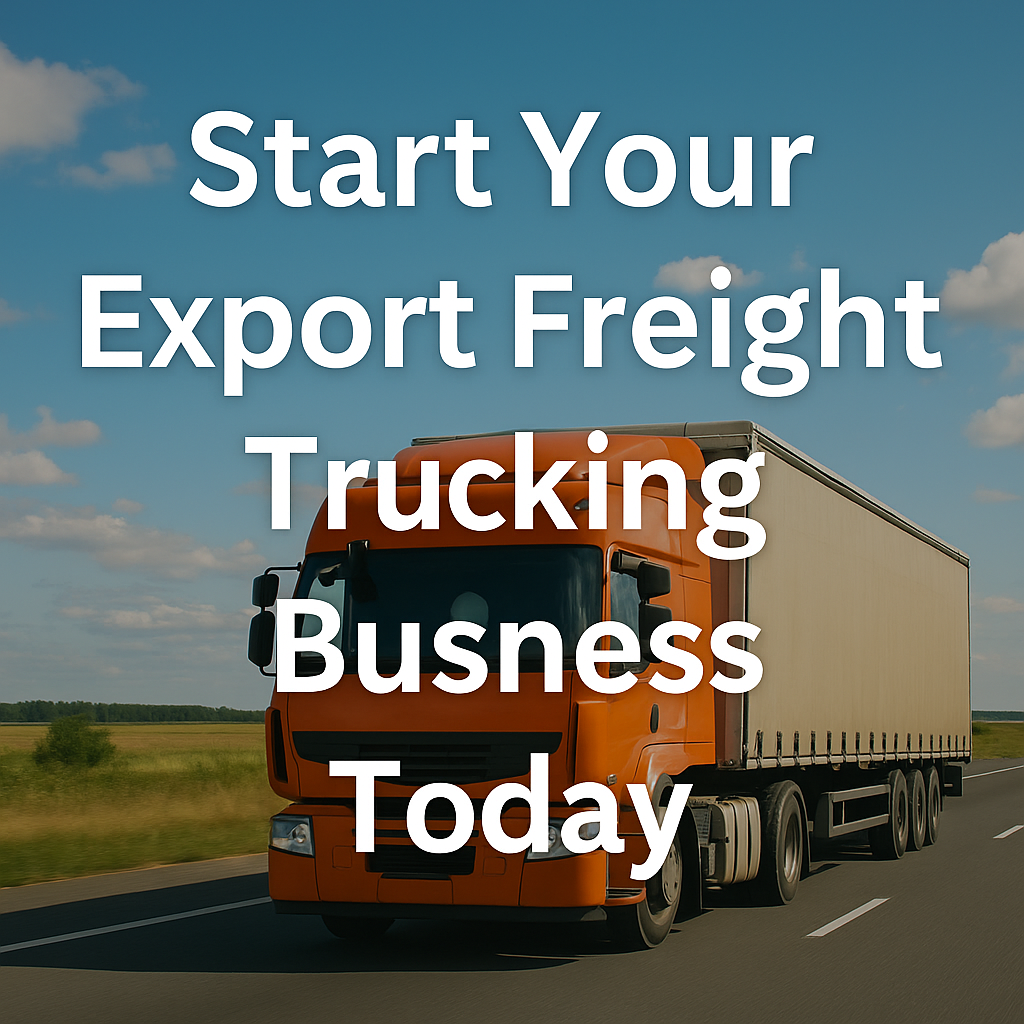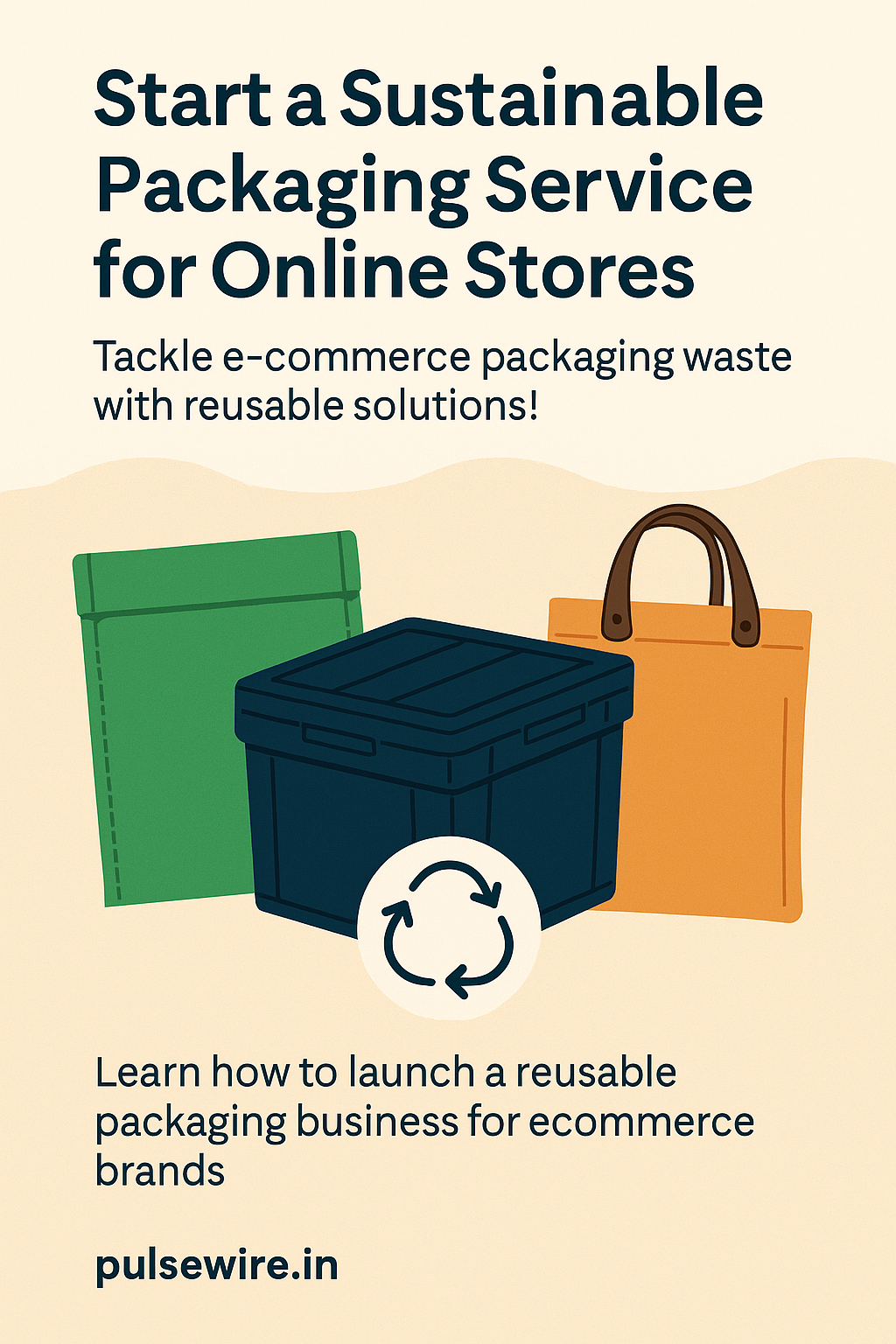Published on: June 18, 2025 | By: Pulsewire

1. Introduction: Success on Roads, Reaching International Markets!
The world’s trade routes don’t just move by sea or air—they begin on roads. Export freight trucking is the backbone of international commerce, moving goods from manufacturers to ports and borders. For aspiring logistics entrepreneurs, it presents a high-potential, asset-backed opportunity to build a scalable and impactful business.
In this guide, we’ll break down:
- What export freight trucking involves
- Permits and legal setup
- Vehicle selection
- Operational best practices
- Cost factors & tech tools
- Scaling strategies
2. What Is an Export Freight Trucking Business?
An export freight trucking business involves transporting goods meant for export from manufacturing units, warehouses, or collection points to ports, airports, or international land borders. These businesses serve as the first-mile delivery agents in global trade logistics.
Export truckers often work with:
- Freight forwarding companies
- Customs clearance agents
- Exporters & manufacturers
- Container yards & ICDs (Inland Container Depots)
3. Legal Requirements & Startup Costs
Before your wheels hit the road, some paperwork is essential:
✅ Company Registration:
Choose a business structure—Sole Proprietorship, Partnership, or Private Limited Company—and register your firm with the MCA or local authorities.
✅ Trade-Related Licenses:
- Importer Exporter Code (IEC) from DGFT (required even for trucking firms working with exporters).
- PAN & GST Registration.
- Logistics-related licenses, if transporting specialized goods.
✅ Vehicle Permits:
Secure national or all-India commercial permits for each truck through the RTO. If dealing with perishable goods, get cold chain or reefer transport approval.
✅ Insurance:
Invest in vehicle insurance, third-party liability, cargo transit insurance, and driver safety cover.
💰 Startup Costs Snapshot:
Initial investment for an export freight trucking business can vary widely. Expect to budget ₹20–₹60 lakhs, depending on:
- Number and type of trucks (containerized, refrigerated, flatbed)
- Licensing & permits
- Insurance and branding
- Hiring & driver training
Start lean with 1–2 trucks and scale gradually.
4. Fleet & Vehicle Selection
Your fleet is your identity. Choose based on:
- Export commodity type: Frozen seafood? Go for insulated trucks. Garments? Standard containers work.
- Route types: Long haul vs short haul
- Load capacity: 9-ton, 12-ton, 16-ton trucks or trailers
- Fuel efficiency & durability
Leasing vs buying: If capital is limited, consider leasing your first vehicle, but ensure full control over operations.
5. Operations & Management
Export logistics requires timely delivery, documentation accuracy, and real-time updates.
Key operations include:
- Coordination with exporters/freight agents
- Loading & unloading oversight
- Customs & port compliance knowledge
- Driver route management
- Timely invoicing & documentation handling
🔧 Smart Tech in Logistics:
Modern logistics now thrives on intelligent tools. Apart from GPS, many transport businesses use:
- Fleet management software (e.g., Fleetx, LocoNav)
- Real-time route & fuel tracking
- Digital invoicing and trip logs
- Driver behavior monitoring apps
These tools reduce idle time, prevent losses, and enhance trust with clients.
6. Profit Margins & Revenue Streams
Profit margins in freight transport typically range from 8% to 20%, depending on route distance, fuel efficiency, and load optimization. Revenue can come from:
- Fixed contracts with exporters/freight agents
- Per trip billing (₹8–₹30/km depending on route and load)
- Value-added services like warehousing, document handling, or reverse logistics
7. Challenges & Risk Mitigation
🛑 Common Risks:
- Fuel price volatility
- Delivery delays
- Driver attrition
- Road permits & compliance
✅ Mitigation Tactics:
- Use route optimization apps
- Maintain a reserve fuel budget
- Train drivers in documentation and professionalism
- Build long-term contracts with key clients
8. Scaling Your Trucking Business
Once stable, you can scale by:
- Expanding your fleet with used or hybrid trucks
- Building regional hubs or branches near major ports (Mumbai, Mundra, Chennai)
- Hiring logistics coordinators & sales reps
- Diversifying services (e.g., cold storage, bonded warehousing, FCL/LCL handling)
With India aiming for $2 trillion in exports by 2030, the sector is full of untapped growth.
9. Conclusion: Drive Into the Future of Trade
Export freight trucking isn’t just about moving cargo—it’s about powering international trade. With the right knowledge, systems, and scale, you can build a business that delivers both impact and income.
Whether you’re a transport veteran or a new entrepreneur, the road ahead is open and full of opportunity.
👤 About the Author
Sandeep Jadhav is a passionate freelance writer who explores entrepreneurship, trade logistics, and business innovation. Though not a certified expert, he focuses on demystifying complex topics for aspiring founders and self-starters.
📎 Connect on LinkedIn









